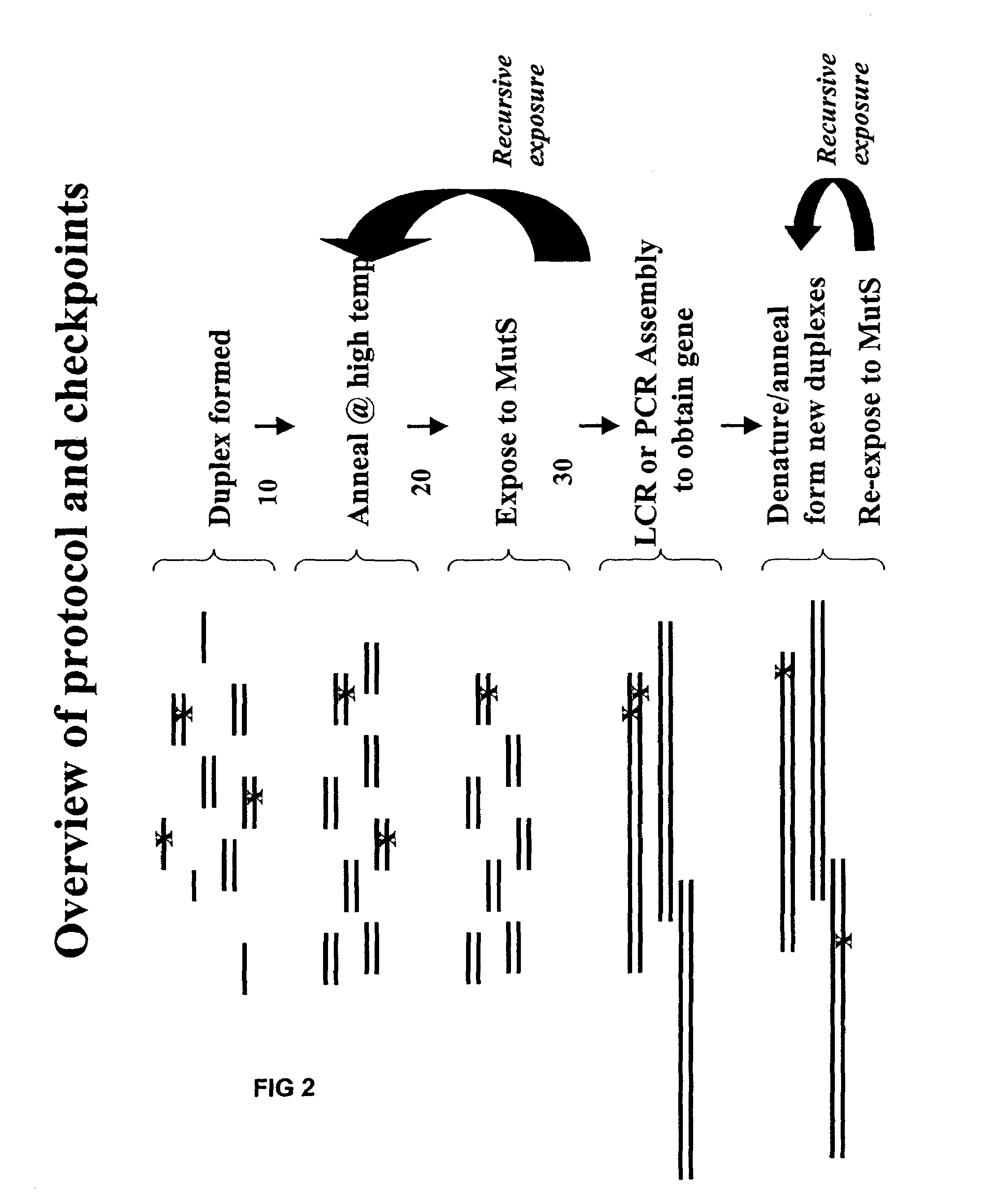Method of error reduction in nucleic acid populations
a nucleic acid and error reduction technology, applied in the field of biochemistry, can solve the problems of difficulty in constructing any new desired larger dna construct, no synthetic or biochemical process is ever completely efficient and accurate, and it is generally impractical to directly construct large segments or assemblies of dna sequences larger than 400 base pairs
- Summary
- Abstract
- Description
- Claims
- Application Information
AI Technical Summary
Benefits of technology
Problems solved by technology
Method used
Image
Examples
examples
[0029]1. General Protocol for the Synthesis of Double Stranded DNA Sequences (Prophetic)
[0030]The synthesis of protected diamine linker and photolabile nucleotide succinates is described in detail in WO 02 / 095073 which has been incorporated by reference and hence need not be discussed further here.
[0031]Preparation of Slides and Oligonucleotide Synthesis (Base Labile Linker)
[0032]Microscope slides are prepared as described by Singh-Gasson et. al, Nature Biotechnology 17, 974-978 (1999) yielding a glass surface derivatized with a linker bearing a free alcohol at the terminus. This slide is soaked in an 0.6 M solution of carbonyldiimidazole in dry dichloromethane (6 hours), washed with dry dichloromethane, followed by soaking in a solution MeNPOC-protected diamine (0.4 M) for 12 hours. The slide is then washed with dichloromethane to yield surfaces with secondary amines capped by the photolabile protecting group MeNPOC. In the first 4 cycles of synthesis, the maskless array synthesize...
PUM
| Property | Measurement | Unit |
|---|---|---|
| Affinity | aaaaa | aaaaa |
Abstract
Description
Claims
Application Information
 Login to View More
Login to View More - R&D
- Intellectual Property
- Life Sciences
- Materials
- Tech Scout
- Unparalleled Data Quality
- Higher Quality Content
- 60% Fewer Hallucinations
Browse by: Latest US Patents, China's latest patents, Technical Efficacy Thesaurus, Application Domain, Technology Topic, Popular Technical Reports.
© 2025 PatSnap. All rights reserved.Legal|Privacy policy|Modern Slavery Act Transparency Statement|Sitemap|About US| Contact US: help@patsnap.com



